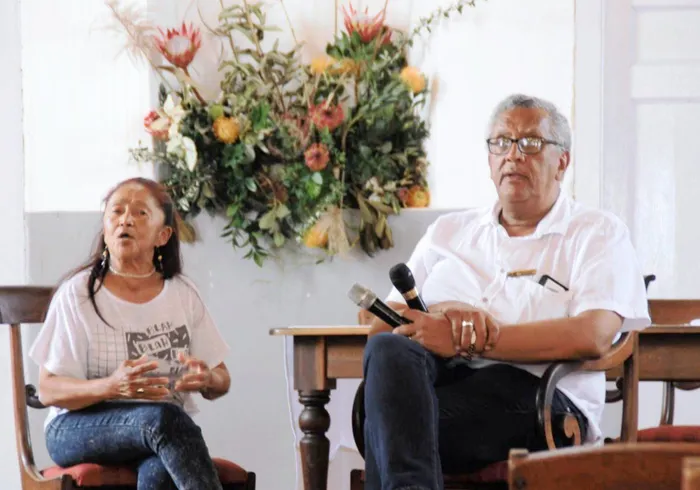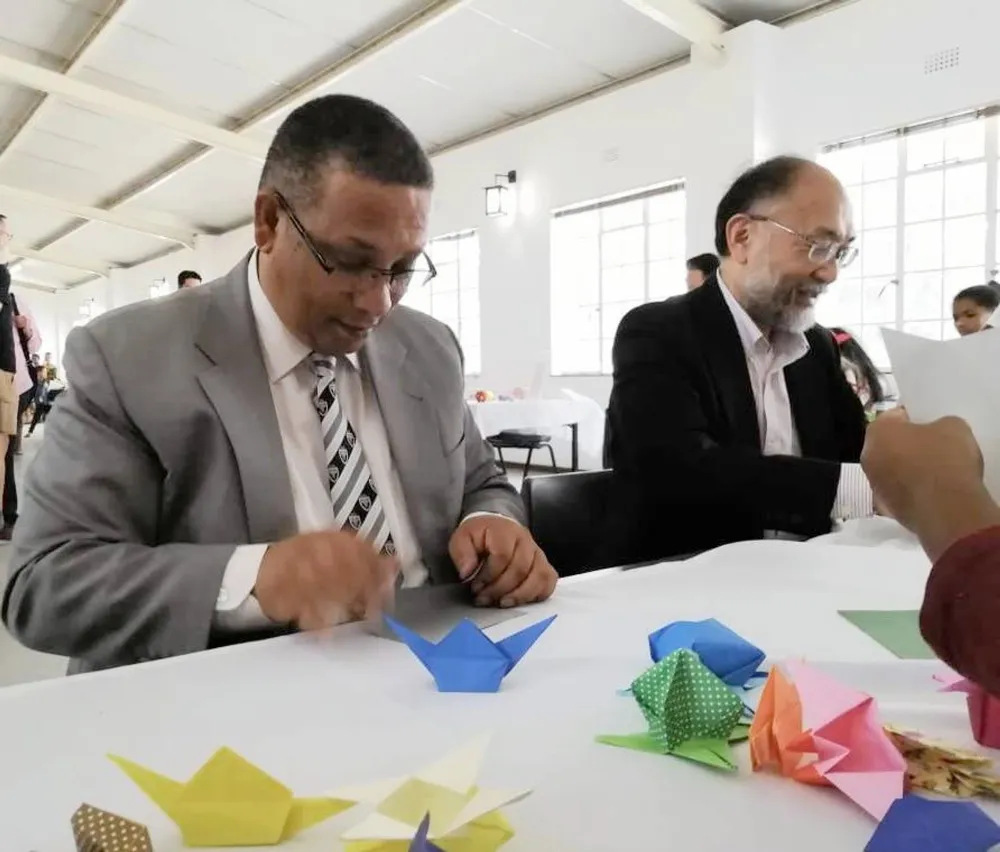50 years after the devastating quake in Tulbagh and Ceres

Annelie Hendricks, a survivor of the earthquake in Tulbagh in 1969, shares her experience, moderated by Calvin van Wyk, the curator at Tulbagh Museum.Photo: African News Agency (ANA) Archives Annelie Hendricks, a survivor of the earthquake in Tulbagh in 1969, shares her experience, moderated by Calvin van Wyk, the curator at Tulbagh Museum.Photo: African News Agency (ANA) Archives
Yesterday, 50 years ago, on September 29, 1969, the Boland valley of Tulbagh and Ceres was hit by the most devastating earthquake in the history of South Africa. Eleven lives were lost and buildings damaged, some beyond repair.
Japan knows that traumatic memories of disaster remain for a long time even after physical reconstruction.
Former mayor of Stellenbosch Conrad Sidego, who was originally from Tulbagh, invited me to the commemoration.
Sidego said his career (management of Anglo American, SA Ambassador to Denmark and the Mayor of Stellenbosch) started with the earthquake. When he was a teacher in Tulbagh his article on the earthquake opened a window for him to become a journalist of Die Burger.
He said the earthquake “shook him out” of the town. That is why he has a strong attachment to this disaster and continuously works for the development of Tulbagh.
Survivor residents shared their experiences of the earthquake vividly as if it was yesterday, describing how scary it was - huge thunderlike sounds, collapsing buildings, shaking streets and screams of people. Many said they thought it was the end of the world.

Dr Ivan Meyer, the Western Cape Agriculture MEC, and Yasushi Naito, the Consul of Japan, at Origami lessons by children of ‘Origami for Africa’.
Some even said human beings should not have gone so far as to land on the moon (US Apollo 11 landed on the moon on July 20, just two months before the earthquake).
One of the survivors told us that on top of the traumatic experience of the earthquake itself, they have memories of how the disaster was used by the then-government to relocate them in terms of the Group Areas Act, from original Helpemekaar to the land further away from the town centre.
It was surprising to know that the famous South African artist, the late Christo Coetzee who lived in Tulbagh, had visited Japan in 1959-60 and interacted with a post-war, avant-garde Gutai art group and influenced the peace movement.

Sakura trees at the Klondyke Cherry Farm in Ceres.
At the Christo Coetzee 90 to Infinity exhibition at the Tulbagh Arts Festival, it was revealed that Coetzee chose to live in Tulbagh because he found special inspiration in the energy of the earthquake.
At Ceres, also extensively damaged, we found Sakura cherry blossom trees and they were blooming. I was amazed to see the national flower of Japan blooming beautifully in the Cape at the end of September whereas Sakura is symbolic of April in the Japanese spring. There are at least four farms that grow cherry blossom trees in Ceres.
Five hundred Sakura saplings were recorded to have been brought to the Cape in 1932 together with the Stone Lantern you still find at the Company’s Garden in the Cape Town city centre donated by the Government of Japan to the City of Cape Town as a token of appreciation for the kindness and hospitality shown to Japanese emigrants on the way to Brazil. Those Sakura might have died out, since they need cold weather of -5°C.

A survivor of the earthquake in Tulbagh in 1969. Photo: Supplied
I was hoping to find some of them in Ceres but at the Klondyke Farm I visited, the cherry trees are all from Europe and North America and were first planted in 1968, a year before the earthquake.
When the earthquake and tsunami hit Eastern Japan eight years ago, 45 South African rescue team members risked their lives to support the people. Many were from the Western Cape.
It was announced recently that one of the host cities for South African athletes at the Tokyo 2020 Olympic/Paralympics is Iwanuma City where the South African team had a rescue operation in 2011.
I remember well that a rescue team member, at the end of the operation, presented a Jabulani soccer ball with a handwritten “Never Give Up” on it to the mayor and the Drum Cafe, a South African NGO which had been visiting elementary schools to encourage traumatised children. We were informed that residents of Iwanuma strongly insisted on hosting the South Africans to show their appreciation. We know that friendship forged at the disaster can also last for a long time.
Kyoko Morgan’s activity of “Origami for Africa” also extends to Tulbagh through Anna Turner, a resident of Tulbagh.
Origami is the traditional Japanese art of paper folding. It uses many folding techniques and various objects. Flowers and animals can be created from a single piece of paper. Anna used to teach origami in Delft with Kyoto and after moving to Tulbagh, she continues to teach and exhibit her masterworks of origami.
It is fun, meditating, stimulating, creative and healing for young and old. Paper cranes symbolise peace and prayer. I had the honour of opening the exhibition on Saturday with Agriculture MEC Ivan Meyer.
That is when the news of Japan beating Ireland at the Rugby World Cup came through, resulting in residents congratulating us throughout the day.
Tulbagh may be far from Japan. But invisible threads of healing and compassion connect people in this beautiful old town. With wonderful scenery and excellent wines, heritage, warm and art-loving people, more people from Japan should visit Tulbagh.
Naito is the Consul of Japan in Cape Town